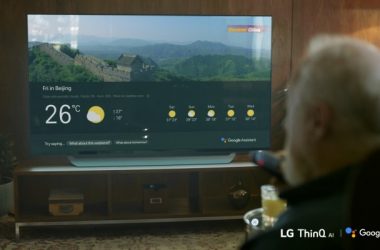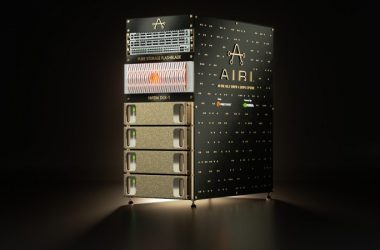
The writing is on the wall. Despite a major push to sell the much-maligned Windows Vista, customers aren’t buying. Nearly two years after Vista’s release, Windows XP remains the standard desktop OS in business, and Microsoft has extended its availability three times (currently to August 2009) due to customer demand. Microsoft itself forecasts just 2 percent growth in Vista sales in early 2009, after lackluster sales in 2008. And that’s after forcing customers to buy Vista to get XP "downgrades."
So all eyes were on Microsoft’s Professional Developer Conference in Los Angeles last week as Microsoft finally took the wrap off Windows 7, the successor to Vista due in early 2010.
But early reaction is that Windows 7 is just a cleaned-up Vista. It’s essentially the same kernel and the same OS, with a couple new technologies thrown in, such as the Surface-based multitouch capabilities and the ability for developers to ribbon-bar-enable their own apps for better consistency with Microsoft’s new UI approach (one that people either seem to love or hate). "It’s not anything radical," says Neil MacDonald, a Gartner analyst who follows Microsoft. "It’s a polished version of Vista."
If Windows 7 is more of the same, then maybe it’s time to conclude that Windows is a technology dead end. Last spring, Gartner warned that Microsoft had to radically change Windows or watch it fade into irrelevancy. Windows 7 is not that radical change.
A glimpse at the future of the PC So what comes after Windows? Already, there are signs of what that might be. Cloud-based delivery of services makes the browser, not the OS, the "kernel" of tomorrow’s PC. Rich Internet application (RIA) technology gives those services the richness that the first generation of the Web could not even contemplate, despite early attempts with Sun’s Java and Microsoft’s ActiveX. Virtualization lets you mix OSes together, as VMware Fusion and Parallels Desktop have proven admirably on Mac OS X. The emergence of desktop virtualization and application streaming allows for even richer apps to be delivered without the weight of a fat OS on the client side.
Put these together, and you can see the future of the PC, says MacDonald. The client OS — Windows, Mac OS X, Linux — becomes irrelevant over time. Instead, the browser evolves into a thin client that lets PCs run services that stream from the datacenter or run in the cloud. The new breed of apps would be services that run through technologies such as Adobe’s Flash and AIR or Microsoft’s Silverlight — it’s no accident that both sets of technologies run on any browser and on the main three OSes of today (Windows, Mac OS, and Linux).
Legacy client apps could run in virtual machines that appear to the user to be part of the "OS," just as Mac users with VMware Fusion and Parallels Desktop can run Windows and Linux apps as if they were Mac OS X-native today. (VMware Workstation and Parallels Workstation likewise let Windows and Linux users run multiple OSes on their systems.) Using VMs to support today’s fat client approach would allow the "OS" to evolve without breaking the legacy apps, and let everyone move more quickly away from the fat client world we live in today — one where, in Microsoft’s case at least, OSes get much fatter each rev.
In this world, Adobe and Microsoft may be the new OS providers, supplemented by virtualization engines from Citrix’s Xen unit, EMC’s VMware unit, or Microsoft. Today’s browsers may not be necessary, except as perhaps containers for bookmarks and other file management activities.
The wild card is Apple, which appears to have no strategy for the cloud other than offering application stores for downloading to its desktop and mobile client OSes. But there are hints in its vague goals for Mac OS X Snow Leopard, due in summer 2009, that Apple is considering a scalable OS that could operate in a streamed or mixed client/Web environment. Apple says it will make the next Mac OS X consume fewer resources, and its iPhone OS is already a subset of its Mac OS. But Apple has done nothing public involving virtualization, streaming, or RIA technologies — the apparent foundations for the new PC order.
Whether Apple is part of the new desktop order, PCs would be essentially network-optimized thin clients that have enough memory and storage to run local apps in VMs or cached streams when disconnected from the Internet, but they wouldn’t need a traditional OS to function.
Think this is science fiction? A company called DeviceVM has an instant-on technology for Windows PCs that boots Linux first to run enable browsers to launch immediately.. Windows follows along in its own sweet time. Dell, Hewlett-Packard, and Lenovo are working on similar approaches — marking a significant decoupling from the traditional client OS mentality. Microsoft says it is investigating a similar concept, using a subset of Windows to run browsers and so on before the whole OS loads. As more apps are browser-delivered, people may find they can get by without the full OS. By the same token, PC makers could make loading the whole OS an option at startup.
Of course, such a transition involves many pesky questions, notes Doug Dineley, Test Center executive editor at InfoWorld. For example, where do drivers live? Is there a universal set of drivers that all hardware makers write to? If the new PC is essentially an amalgamation of services, streamed apps, and virtual environments, there are still devices and peripherals to be managed. The hardware doesn’t go away.
Microsoft’s apparent strategy for a post-Windows world The question is whether that future will involve Microsoft. A look at Windows 7 may lead you to answer no, but MacDonald notes that Microsoft has its hand in all these areas and is making some moves that indicate it actually gets it: "They see these trends." But Microsoft can’t suddenly shift, given the billions of dollars of revenue it gets from Windows. Plus, as the Vista release showed, users hate it when their applications stop working due to an OS upgrade, even when the reason is legitimate (such as fixing Vista’s security model). That’s why MacDonald sees a decade-long transition ahead, one that will become apparent to most people in 2011 as apps reach a tipping point away from the client OS-centric model we all have today to a services-centric model now emerging.
Of course, others see this trend as well, as evidenced by Google’s Internet-delivered apps; Adobe’s its multiplatform AIR and Flash RIA delivery technologies; and efforts by Amazon.com, Hewlett-Packard, IBM, and Sun to get into the cloud provisioning game.
While Microsoft is mum on its plans, there are several hints that at least its researchers see the coming shift way from the fat client OS and are investigating technologies to make the transition.
Perhaps the most significant is Silverlight 2, which will compete with Adobe’s Flash and AIR. In the early days of the Internet, Microsoft created ActiveX, a technology that allowed apps to run in a browser and communicate with the client and the server. ActiveX runs only on Internet Explorer, which was fine when all PCs ran IE and the Apple Macintosh looked to be a dead platform. But the Mac is now ascendant, and in the Windows world, IE is facing stiff challenges from Firefox and Google Chrome. So an IE-dependent technology has become a liability, cutting out perhaps a quarter of a Web app’s potential users. MacDonald expects ActiveX to fade away, another legacy technology made irrelevant by the new PC order.
In contrast to its proprietary ActiveX strategy, Microsoft plans to have Silverlight run on Windows, Mac OS X, and Linux — and, notes Gartner’s MacDonald, even on iPhone and Google Android devices. It will run in Internet Explorer, Safari, Firefox, and other browsers. Plus, like Adobe’s AIR, Silverlight 2 won’t even need to run in a browser. "Silverlight gives you 80 percent of .Net, at 20 percent of the footprint," MacDonald notes. All this means that Silverlight can be the RIA delivery method in almost any context: in a fat client OS, in a thin client, on a mobile device, and so on. "Microsoft can monetize non-Windows platforms if they do this right," MacDonald contends.
But Microsoft’s toolkit to make the transition to the new PC order goes beyond Silverlight. Microsoft’s entry into virtualization hypervisors with Hyper-V is an obvious tool. So is the application virtualization technology Microsoft got when it bought Softricity in 2006. And then there’s Azure, the new cloud services platform Microsoft announced last week, which seems to be based on the popular SharePoint collaboration platform. The use of that platform could help tie the emerging cloud to the existing desktop world, giving both Microsoft and enterprises a transition point.
There are several projects within Microsoft to explore how to keep Microsoft technology central to a post-Windows world, notes MacDonald. One is the Midori effort to create a componentized OS freed of all the DOS and NT legacy that has a stranglehold on today’s Windows. And Microsoft’s Singularity project is another attempt to explore a reinvention of the OS in today’s context.
The question remains whether Microsoft can take these pieces and put them together in a compelling way. Can Microsoft both break from the past and help enable the transition away from it? Or will Bill Gates’ old vision of PCs being desktop mainframes — or the need to keep selling bloatware every few years for the huge cash infusion it brings — get in Microsoft’s way?
Windows 7 looks like lipstick on the Vista pig. Maybe it’s time to contemplate the PC after Windows





